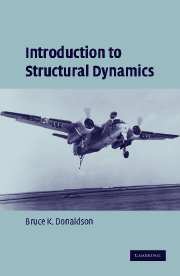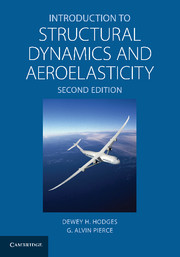Introduction to Structural Dynamics
This textbook, first published in 2006, provides the student of aerospace, civil and mechanical engineering with all the fundamentals of linear structural dynamics analysis. It is designed for an advanced undergraduate or first-year graduate course. This textbook is a departure from the usual presentation in two important respects. First, descriptions of system dynamics are based on the simpler to use Lagrange equations. Second, no organizational distinctions are made between multi-degree of freedom systems and single-degree of freedom systems. The textbook is organized on the basis of first writing structural equation systems of motion, and then solving those equations mostly by means of a modal transformation. The text contains more material than is commonly taught in one semester so advanced topics are designated by an asterisk. The final two chapters can also be deferred for later studies. The text contains numerous examples and end-of-chapter exercises.
- Thorough explanation of the Lagrange equations of motion; consistent use of equations throughout enhances problem-solving abilities
- Innovative organization with degree of freedom systems
- Problems focus on structures familiar to engineering students
Product details
December 2006Hardback
9780521865746
566 pages
254 × 178 × 32 mm
1.13kg
Available
Table of Contents
- Preface for student
- Preface for instructor
- 1. The Lagrange equations of motion
- 2. Mechanical vibrations: practice using the Lagrange equations
- 3. Review of the basics of the finite element method for simple elements
- 4. FEM equations of motion for elastic systems
- 5. Damped structural systems
- 6. Natural frequencies and mode shapes
- 7. The modal transformation
- 8. Continuous dynamic models
- 9. Numerical integration of the equations
- Appendix I
- Appendix II
- Index.





